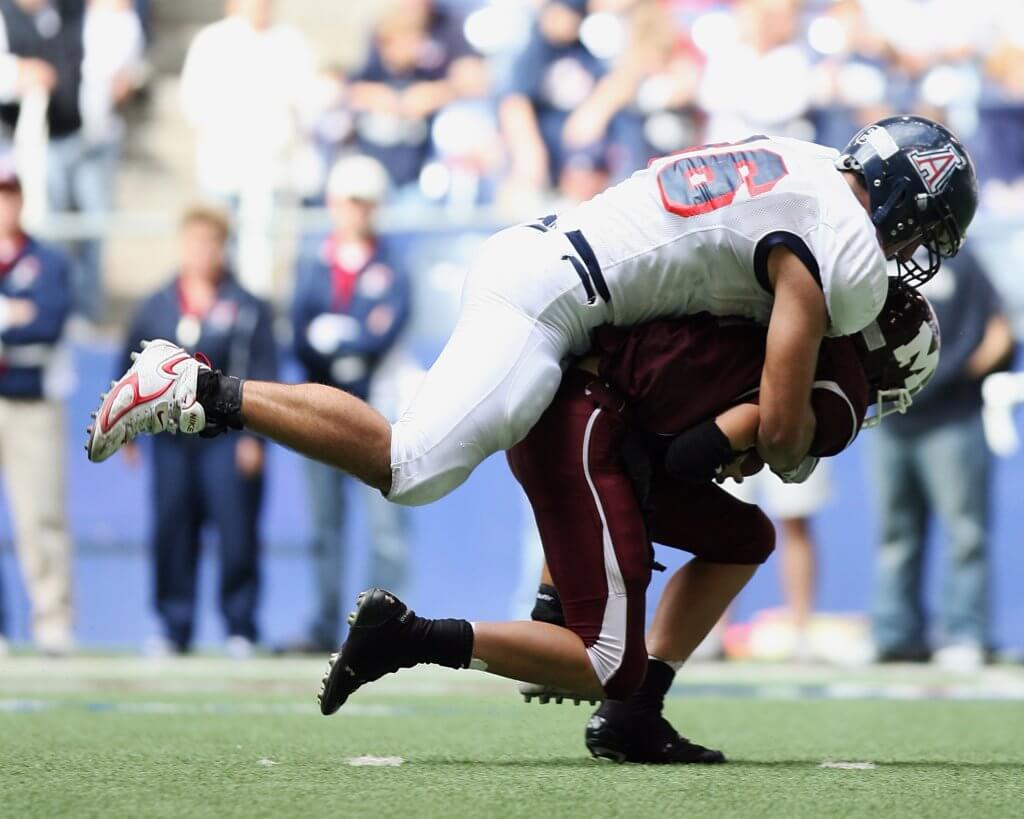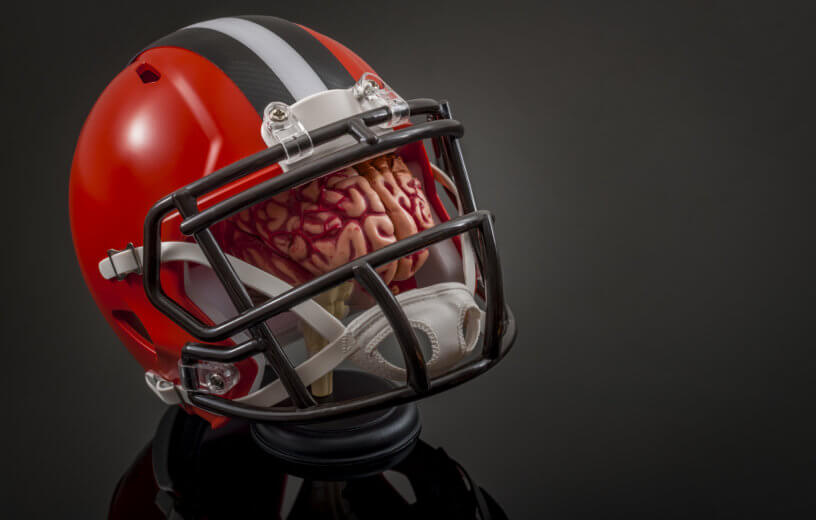BALTIMORE — Brain scans of long-retired NFL players still show signs of brain damage over a decade after their initial head injuries, researchers from Johns Hopkins Medicine report. Their study discovered high levels of a repair protein associated with traumatic brain injuries like concussions.
While that repair protein, 18 kDa translocator protein (TSPO), is present in the brain at high levels immediately after suffering a brain injury and is part of the natural inflammatory response to help facilitate repair, study authors explain its presence after so much time has passed indicates brain injury and repair processes persist for years after players participating in collision sports end their careers, potentially leading to long-term cognitive problems such as memory loss.
All in all, the study suggests injury-related brain inflammation persists in athletes up to 12 years after they stop playing.
“The findings show that participating in repeated collision sports like football may have a direct link to long-term inflammation in the brain,” says Jennifer Coughlin, M.D., associate professor of psychiatry and behavioral sciences at the Johns Hopkins University School of Medicine, in a media release.
Ongoing studies like the current one, Coughlin notes, add further details regarding how the brain heals (or doesn’t), as well as how repeated brain injuries, even mild ones that players routinely shake off, may impact cognitive abilities over time.
Prof. Coughlin explains that TSPO is a protein associated with immune cells in the brain called microglia. This protein is always present to some degree at relatively low levels, but when a traumatic brain injury (TBI) of any kind occurs, TSPO levels jump up dramatically as part of the immune response.
Prior studies have noted the presence of elevated levels of TSPO up to 17 years after injury. Study authors say this indicates the mind remains in a heightened state of injury and repair long after the traumatic injury.

For this latest project, study authors examined a set of MRI and PET scans conducted between April 2018 and February 2023 among 27 former NFL players. The team compared those brain scans to others acquired from 27 non-contact sport athletes (swimmers) who all participated in at least two years of National Collegiate Athletic Association Division I, II, or III level competition. All of the included athletes were between the ages of 24 and 45, and all were male. Participants across both groups also underwent a series of cognitive assessments, such as memory tests.
Results revealed that former NFL players performed worse across both learning and memory tests than the swimmers. Moreover, researchers say levels of TSPO in the former NFL athletes were higher on average in comparison to the swimmers. This was particularly true in areas of the brain connected with memory and attention.
“These findings are relevant to both collision sport athletes and other populations that suffer from single or reoccurring mild TBIs, including those experienced during military training and repeated head banging behaviors in children,” Prof. Coughlin explains. “Since TSPO is associated with repair, we don’t recommend the use of drugs or other interventions at this time. Instead, we will continue to monitor TSPO levels through more research, in order to test for sign of resolution of the injury with more time away from the game.”
Study authors stress that if there are cases where TSPO remains high, they will focus on the factors associated with a vulnerability to lasting injury after a professional career in American football. Ideally, researchers want to help guide strategies for the use of immunomodulating treatments (possible anti-inflammatory medications) to help heal the brain.
Moving forward, the research team plans to continue tracking this study’s population of former NFL athletes’ TSPO levels over time to see whose brains heal and whose do not. The end goal is to help inform the development of new medications and personalized guidelines for rest periods following repeated brain injuries.
The study is published in JAMA Network Open.

While I enjoy watching the NFL as it now exists, I highly recommend an immediate transition to FLAG football. It can be just exciting and even lends itself to more inventive play-calling